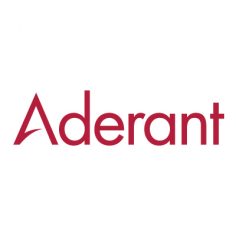Aderant Think Tank blog: Five themes in legal pricing and the business of law
This resource was written by Dan Ronesi and originally published on the Aderant Think Tank.
Law firms haven’t “upended” the partnership model just yet, but they are facing headwinds and are the source of a major trend unfolding in the legal market. While artificial intelligence is grabbing much of the attention, in the background law firms are rethinking the traditional partnership model and focusing on becoming better businesses.
So said Toby Brown, the chief practice management officer with Perkins Coie LLP. A widely-respected pricing and knowledge management strategist, Brown shared this perspective during an interview with the LeftFoot business development podcast hosted by Nicole Giantonio
He pointed to a number of indications, including the evolution of partner types, a larger spread in partner compensation and even the evolution of roles like his own. While he was initially “very focused on pricing,” his role has evolved to meet the greater demands around the business of law.
His comments echo market research findings, including those in the 2016 Law Firms in Transition survey by Altman Weil. The study found 57% of larger firms “are making strategic changes in pricing approach” and 93% believe improving “practice management efficiency is a permanent trend.”
While the podcast interview with Brown was wide-ranging, several major themes that parallel Aderant’s own perspective on the market were heard:
1) Clients are competitive, but law firms retain an edge.
It’s no secret over the last several years, clients have increasingly taken more work in-house. In 2016, for example, corporate legal took back some $4 billion in legal work, according to a study from BTI Consulting Group. The research firm found overall, GCs have taken legal work in-house eight out of the last ten years.
Brown noted this trend has led to extensive hiring by corporate legal departments. In the last year or so, he met with the “GC of a large automotive company” that planned on growing inside counsel from 500 to 800 lawyers.
The allure seems straightforward. Corporate legal departments can avoid increasing market rates and the cost of law firm overhead by hiring lawyers directly. He cautions, however, that what corporate legal departments are in effect doing is buying law firm challenges. Moreover, they may not be as well prepared to address challenges as their law firm counterparts are.
Most in-house legal teams do not have the basic technology infrastructure that law firms have long since acquired, such as document management software. He said this is because, inside a large company, the corporate legal department is often viewed as a cost center.
What this means is, while corporate legal is grappling with basic essentials, law firms are looking at interesting technologies – from machine learning to data analytics.
2) Tie legal pricing to business outcomes.
There’s a good reason why two similar cases in patent litigation for the same client might have vastly different pricing structures. One case the client considers a “nuisance” and wants the problem to go away quickly. The other is deemed core to the business and the client is willing to defend their claim vigorously, in other words “money is no object” for bet-the-company cases.
This was Brown’s example to demonstrate how and why business outcomes should drive legal pricing. While GCs have experimented with all sorts of ways to control outside counsel spending and get more value for their legal dollar, some are prone to overlook the business objective in the process.
In this way, RFPs are often structured in a manner that ties fees to the effort, rather than to a business outcome. As result, both law departments and law firms wind up wasting a lot of time, money and energy when getting down to brass tacks on the business goals would be much more efficient.
3) Discounts vs. fixed fees: a healthy way to manage a profit.
Brown said many in-house attorneys left a law firm before growing to a level that imparts an understanding of law firm economics. This is partly to blame for the trend in discounts, which are a “dead-end” for law firms because, at some point, the cost of hours to a law firm will cross the discount threshold.
Large businesses that send lots of work to a law firm are likely to benefit from deep discounts. Many in-house attorneys only see the top line being sent to a law firm. It may come as a surprise that large portions of legal work being sent to law firms are actually unprofitable, said Brown.
He suggested that fixed fees would change things and provide a law firm with “a healthy way to manage” profitability. If the only thing a client wants is a discount, then that might set up future problems: billing more unprofitable hours isn’t going to help the firm be any more profitable.
4) Law librarians, law firm resources and billing guidelines.
Clients “go to great lengths to list all of the things they don’t want to pay for,” said Brown, referring to the trend in outside counsel guidelines. For example, some guidelines prohibit fees for law librarians.
This is one of his pet peeves because law librarians are the “lowest cost / highest value” resource in many firms. That question bridges to his larger point: when outside counsel guidelines state law departments won’t pay for certain legal work. This tells the firm either that work isn’t important, or the firm should be using another resource.
In the case of a law librarian, it could mean the task of research falls to an associate. He’s not convinced clients realize the unintended consequences of such policies. More importantly, in the case of an agreed-upon budget or fixed fee agreement, clients shouldn’t be so concerned with what resources a firm is using if the law firm is on budget and driving successful outcomes for the client.
5) Good communication begins with difficult pricing conversations.
“Lawyers will do anything to avoid talking about fees,” said Brown, noting that pricing conversations are difficult for both inside and outside counsel.
He said this is partly due to the personality attracted to the legal profession, but also a natural extension of the attorney-client relationship. Lawyers sometimes worry that discussing fees puts them in opposition with the client.
On the contrary, clients are yearning to have these conversations and law firm attorneys willing to broach them become “a counselor to the client in a new way.” This is a critical skill that will help ensure client satisfaction, strengthen relationships and grow a book of business.



